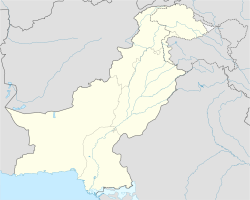Top Qs
Timeline
Chat
Perspective
Wadh
Pakistani town From Wikipedia, the free encyclopedia
Remove ads
Wadh (Urdu: وڈھ), with a population of 26,875, is the fourth largest urban centre in Khuzdar District, in the province of Balochistan, Pakistan.[1] It serves as the administrative centre of Wadh Tehsil. The majority of the town's population belongs to the Mengal tribe, one of the prominent Baloch tribes in the region. The local economy is primarily based on agriculture and mineral extraction, with farming and mining serving as the main sources of livelihood for residents.
Remove ads
Demographics
According to the 2023 Pakistan census, Wadh had a population of 26,875.
Education
Wadh is home to several educational institutions serving the town and tehsil. The Government Boys High School and Government College Wadh have been established by the Government of Balochistan to provide secondary and tertiary education.[3] Additionally, the Lasbela University of Agriculture, Water and Marine Sciences operates a campus in Wadh, offering higher education in agricultural and environmental sciences.[4] The Wadh Student Library serves as a local educational resource and study space for students in the region.[5]
Remove ads
Health
The Civil Hospital Wadh Town is the main healthcare facility for both residents of the town and the wider Wadh Tehsil, offering basic medical services.[6]
History
Wadh and its surrounding mountainous region in Khuzdar have a long and turbulent history, extending from prehistoric times to the present day. Archaeological remains, including ancient sites and cave paintings, attest to early human settlement in the area. Among the most notable are the Tharia Cave Paintings, located near the Pallimas Valley, which offer insight into the prehistoric cultures that once inhabited the region.[7]
The area is predominantly inhabited by the Mengal and Sasoli tribes, who speak Brahui, a Dravidian language that sets them apart linguistically from their neighbours, who mostly speak Iranian languages. Despite successive waves of rule by the Arab empire, Persian and Indian dynasties, Afghanistan, and eventually British colonial authorities from 1839, the Brahui-speaking communities have maintained a distinct cultural identity. Following the end of British colonial rule, it became part of Pakistan in 1948.
Remove ads
References
Wikiwand - on
Seamless Wikipedia browsing. On steroids.
Remove ads

